China's Chang'e-4 lands on far side of the Moon
The China National Space Administration (CNSA) have announced that they have landed the first probe at 02:26 GMT to explore the far side of the Moon.
As the 50th anniversary of the first crewed Moon landing looms, space organisations still find new science to explore with the advancement in technology - this time a mission which had not been carried out or attempted until recently and had its successful landing earlier on today; CNSA have landed a probe on the far side of the Moon; the side that we cannot see from Earth due to the Moon being tidally locked.
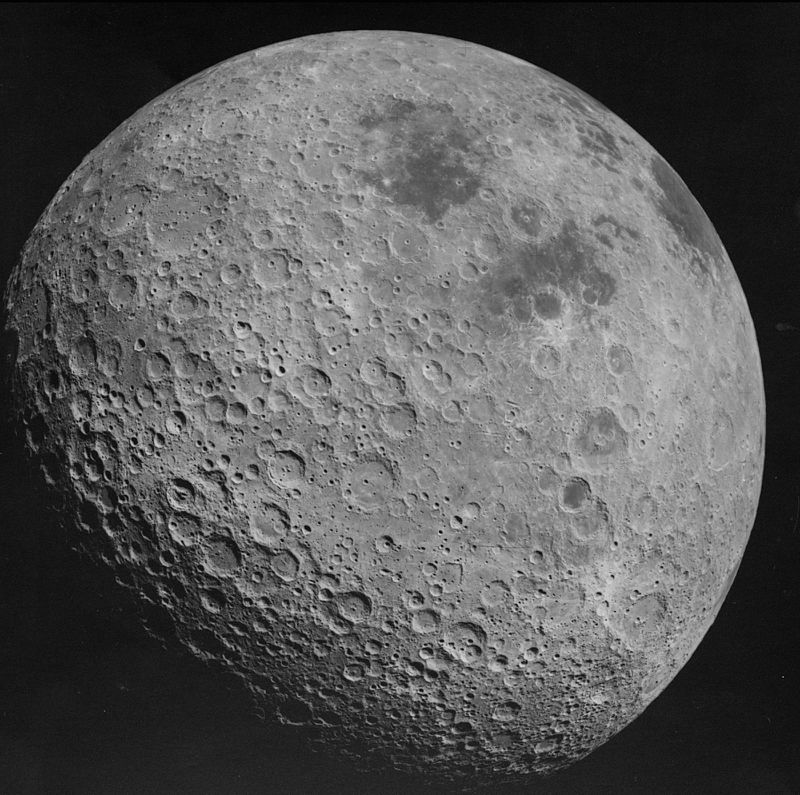
South Pole-Aitken basin not visible in this image.
Image Credit: NASA
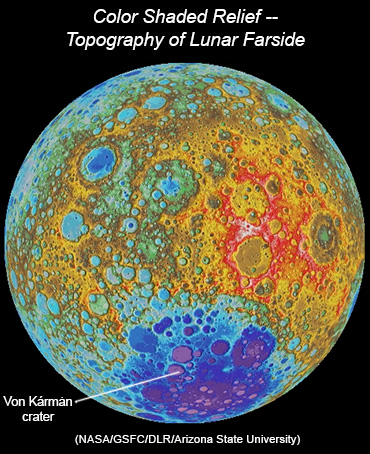
in the South Pole-Aitken (SPA) basin.
(Image centered at a longitude of 180°).
The probe landed in the Von Kármán crater located in the South Pole-Aitken (SPA) basin, as shown in the image on the right above. The probe's mission is to analyse the geology of the unexplored region in addition to conducting biological experiments.
Why the Von Kármán crater?
If you're going to send a probe for the first time ever to the far side of the Moon, you need to make sure you're sending it to the right location for the best scientific study - so why is the Von Kármán crater the location of choice?
The South Pole-Aitken (SPA) basin is in fact currently known to be the oldest basin on the Moon and is a huge structure over 2,500km in diameter. It is an impact crater left by a huge collision that crashed down through to the Moon's crust and into the more solid, bulky layer known as the mantle (not too dissimilar to the second diagram on our Earth page). This makes geological study of this area more accessible without the need for drills or any kind of tunneling instruments to reach the deeper interior.
"I personally feel very excited and proud of the successful landing of Chang'e-4, as this is not only a really impressive accomplishment, but also has many scientific potentials," added Le Qiao, a lunar geologist at Shandong University, Weihai.
The landing was a huge technological and engineering feat for humanity, but there was more than enough time for the lander to take some photos on its way down to the surface!
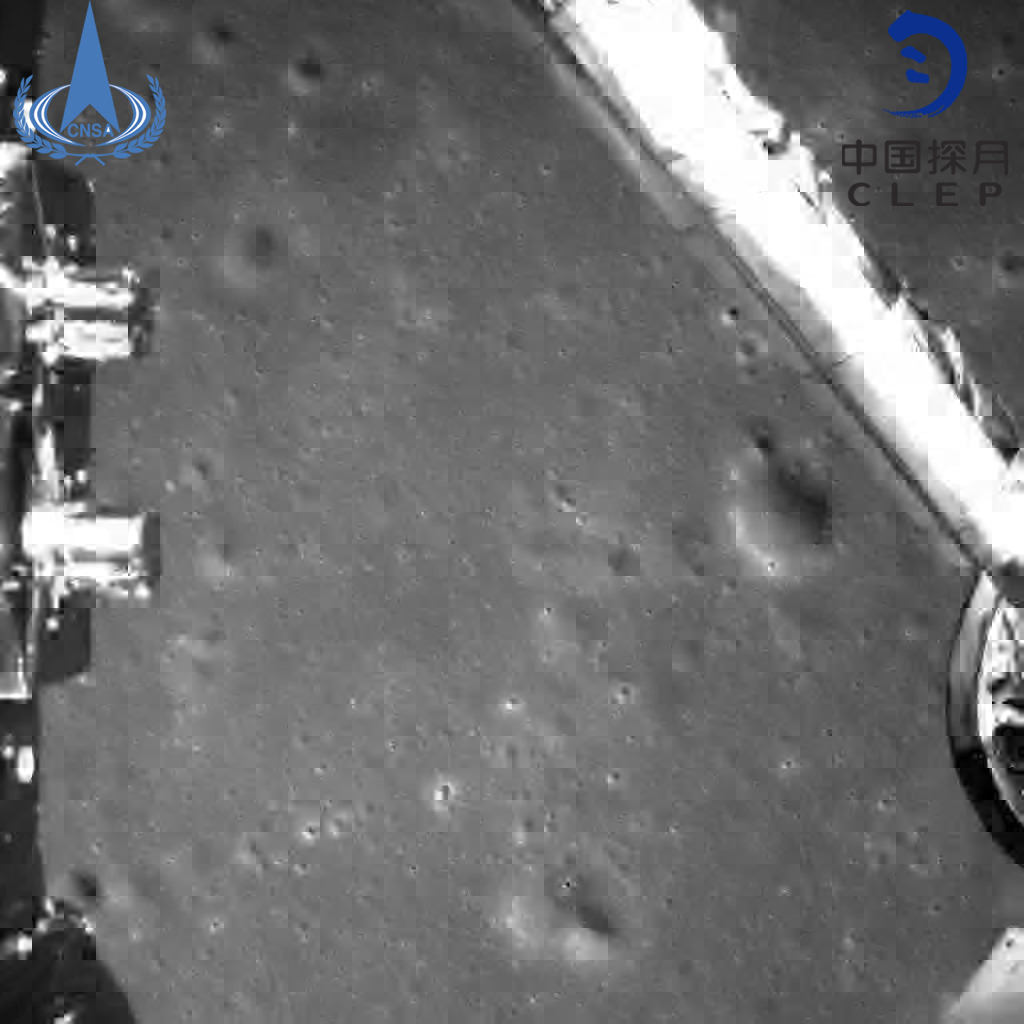
as it descends to the lunar surface.
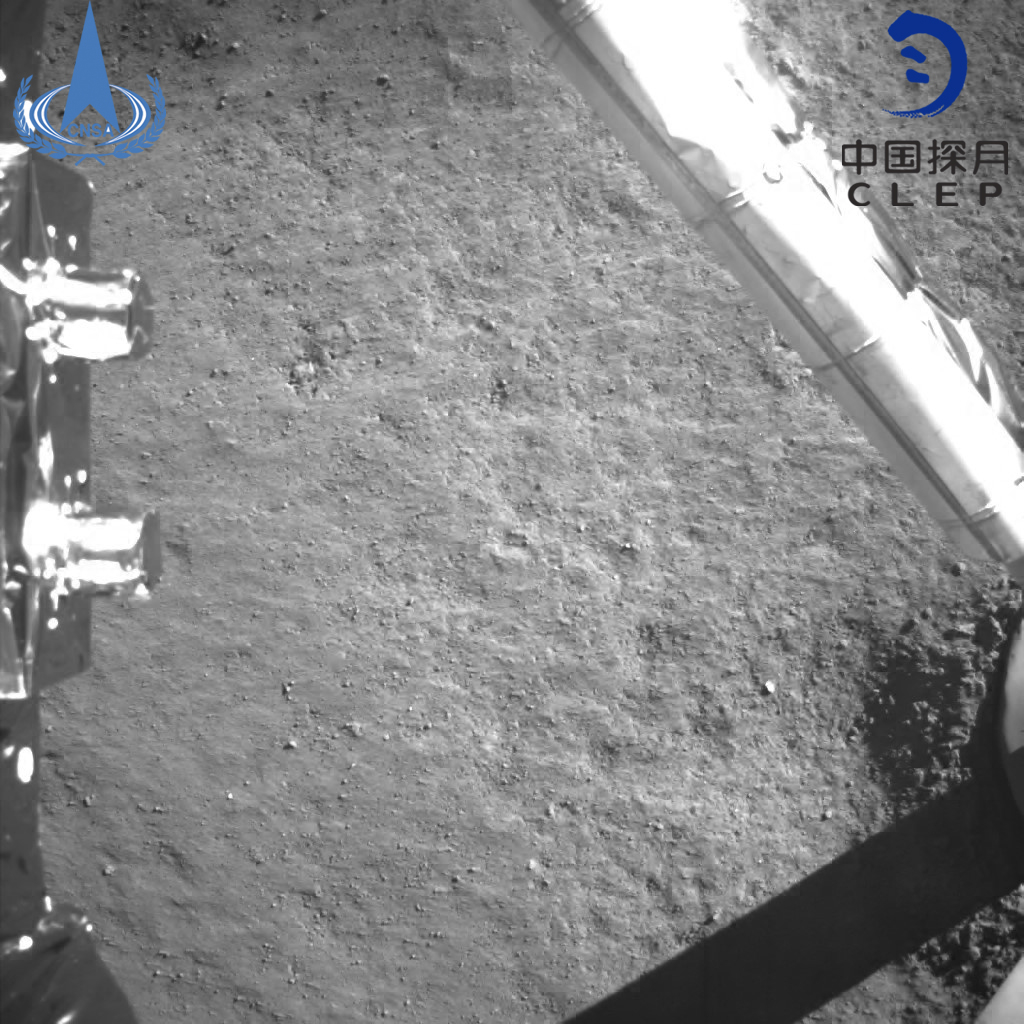
Image Credits: CNSA
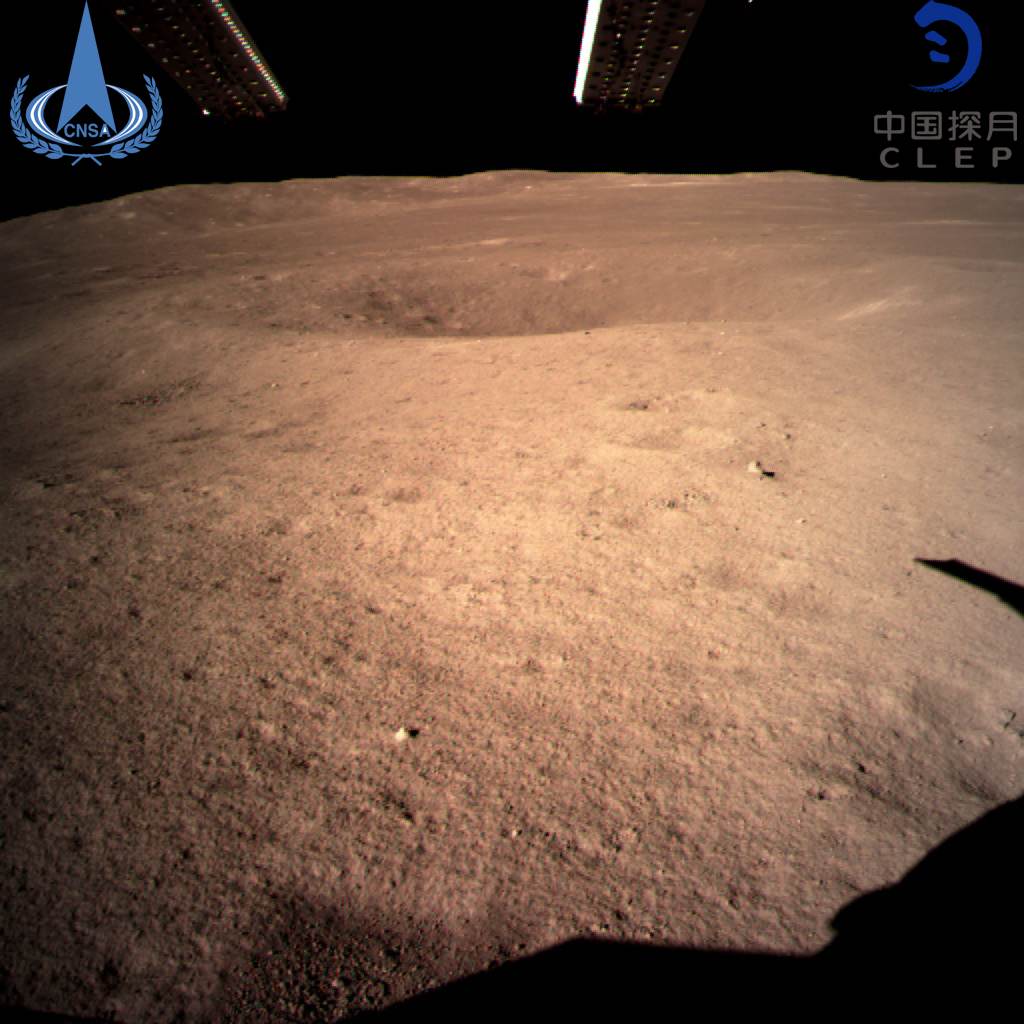
landing site post-landing.

